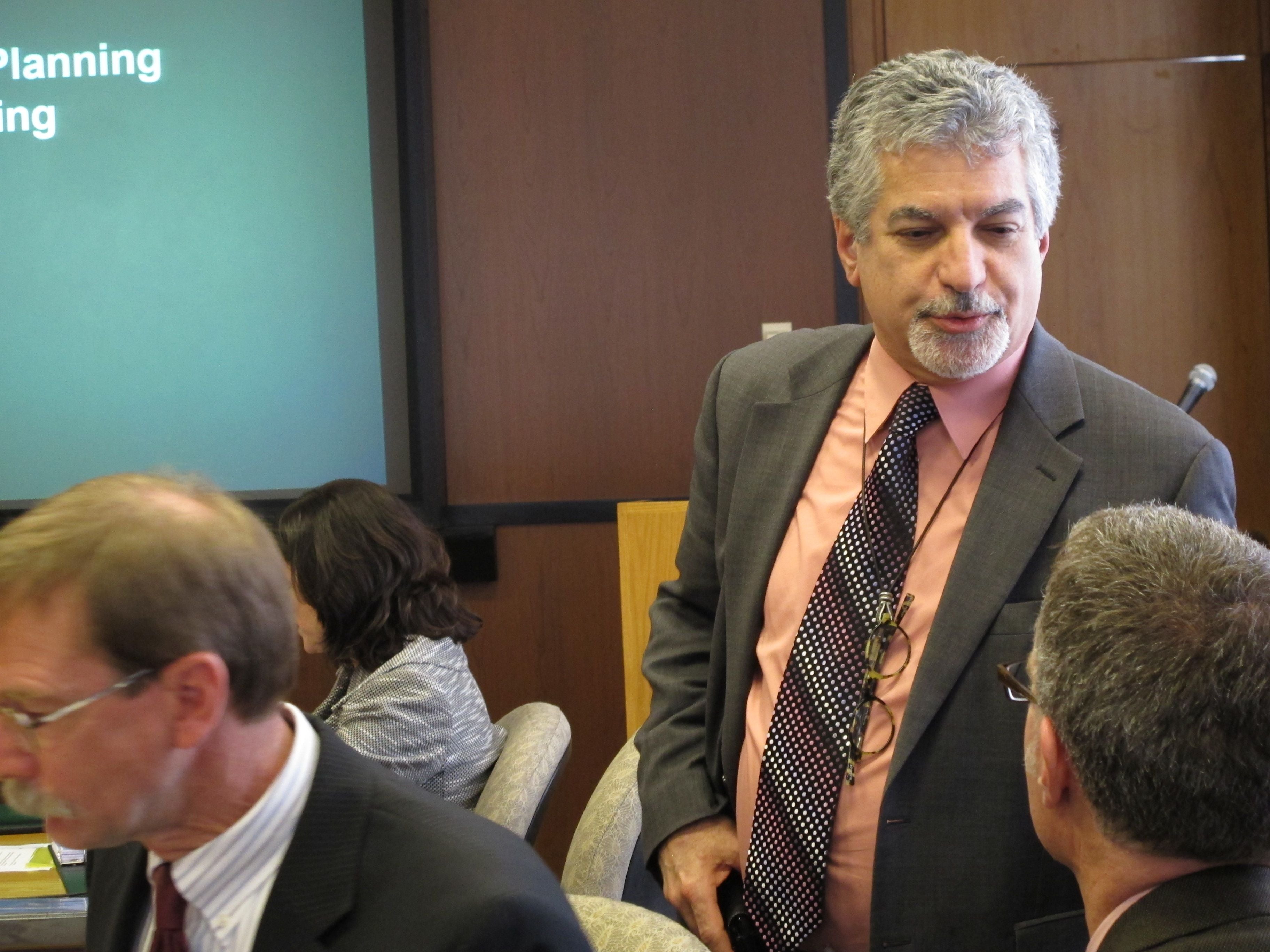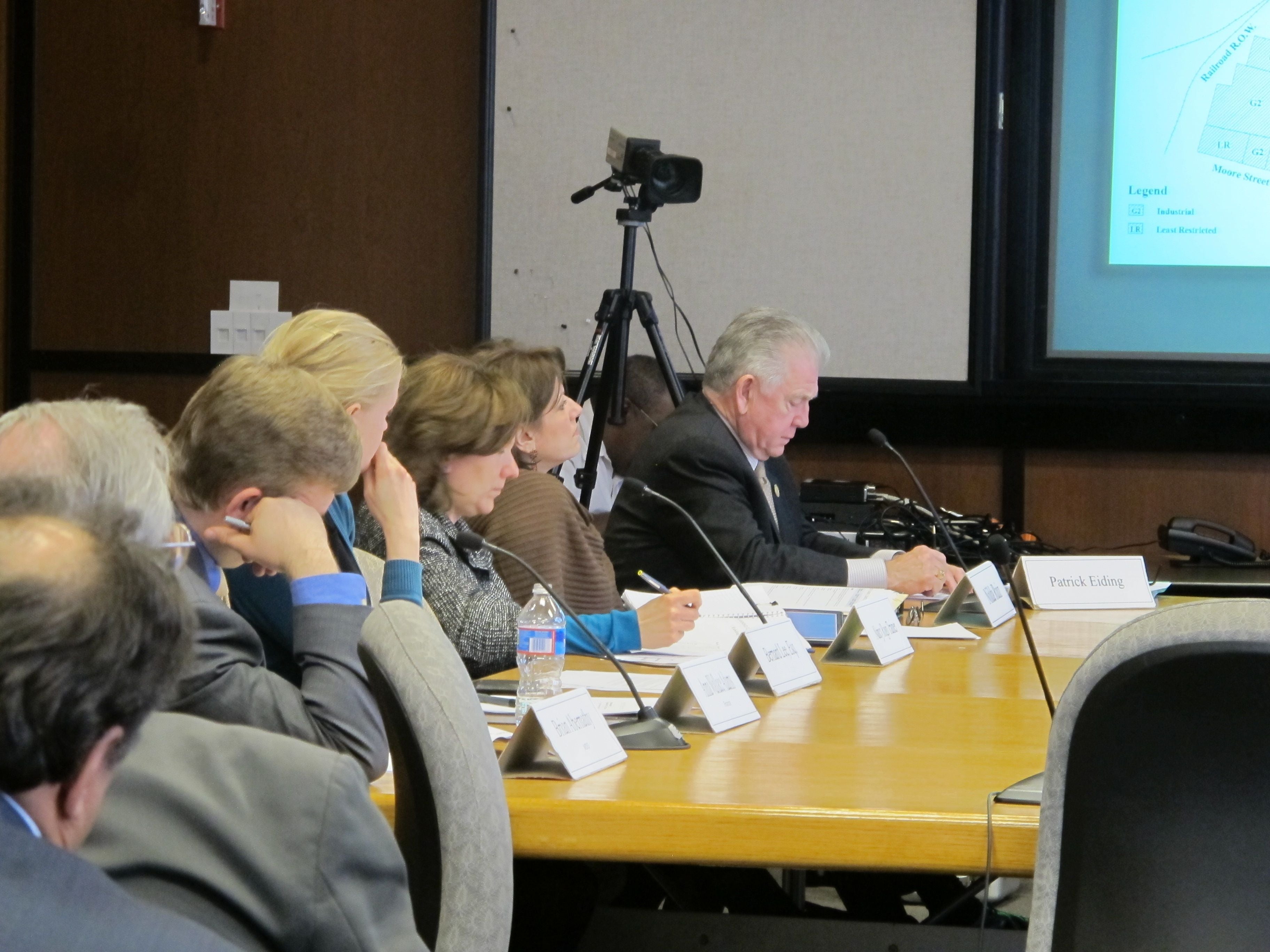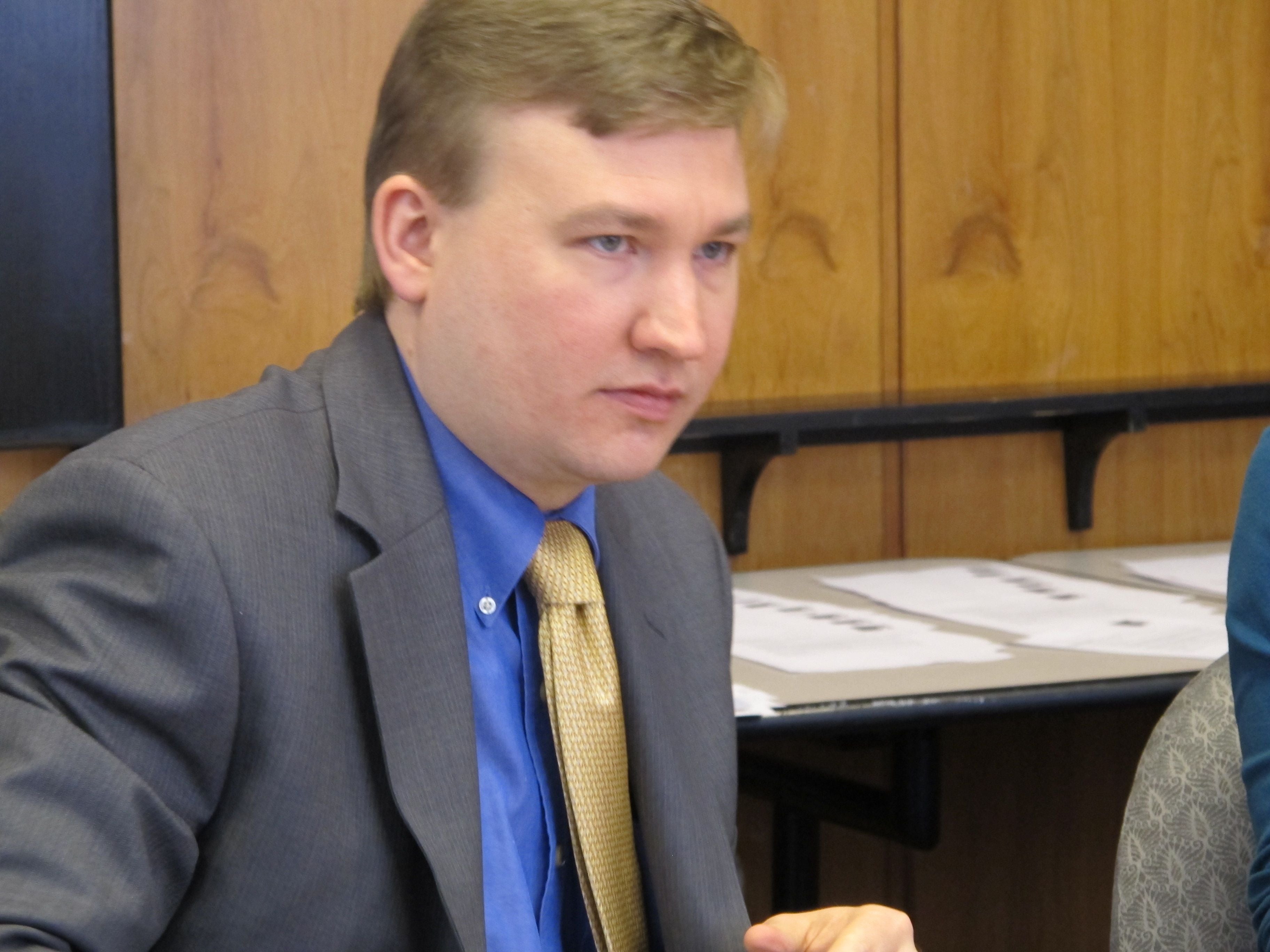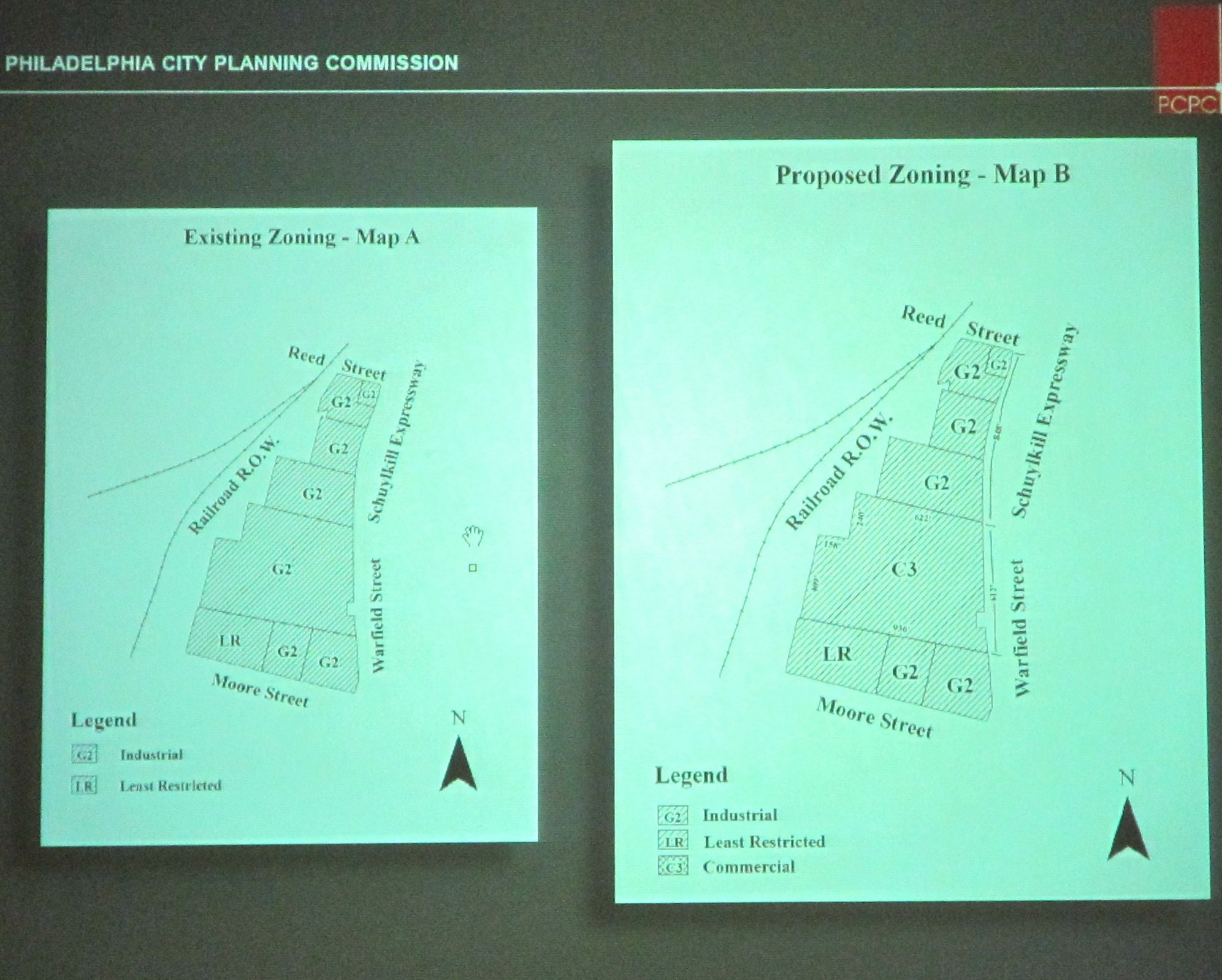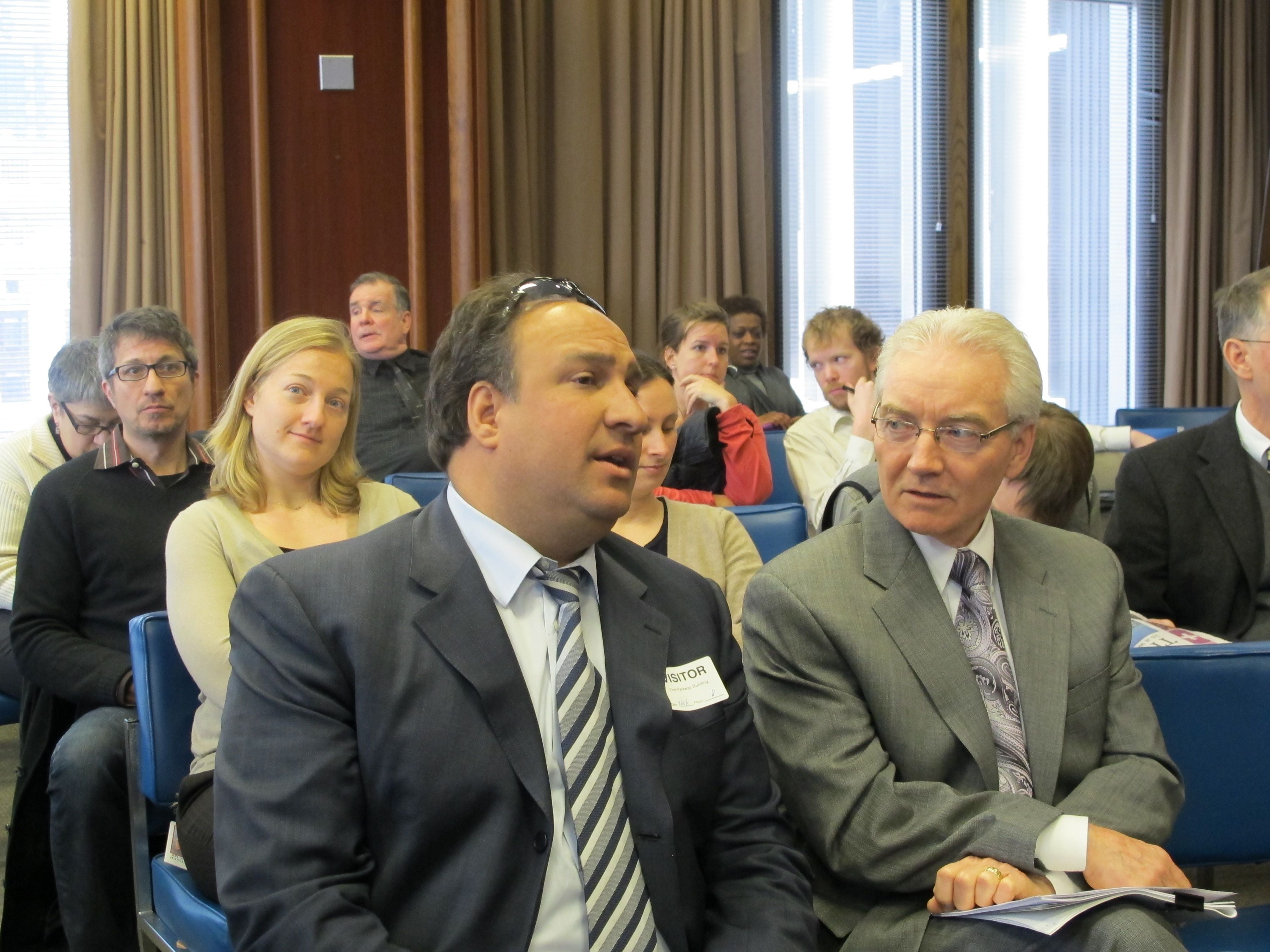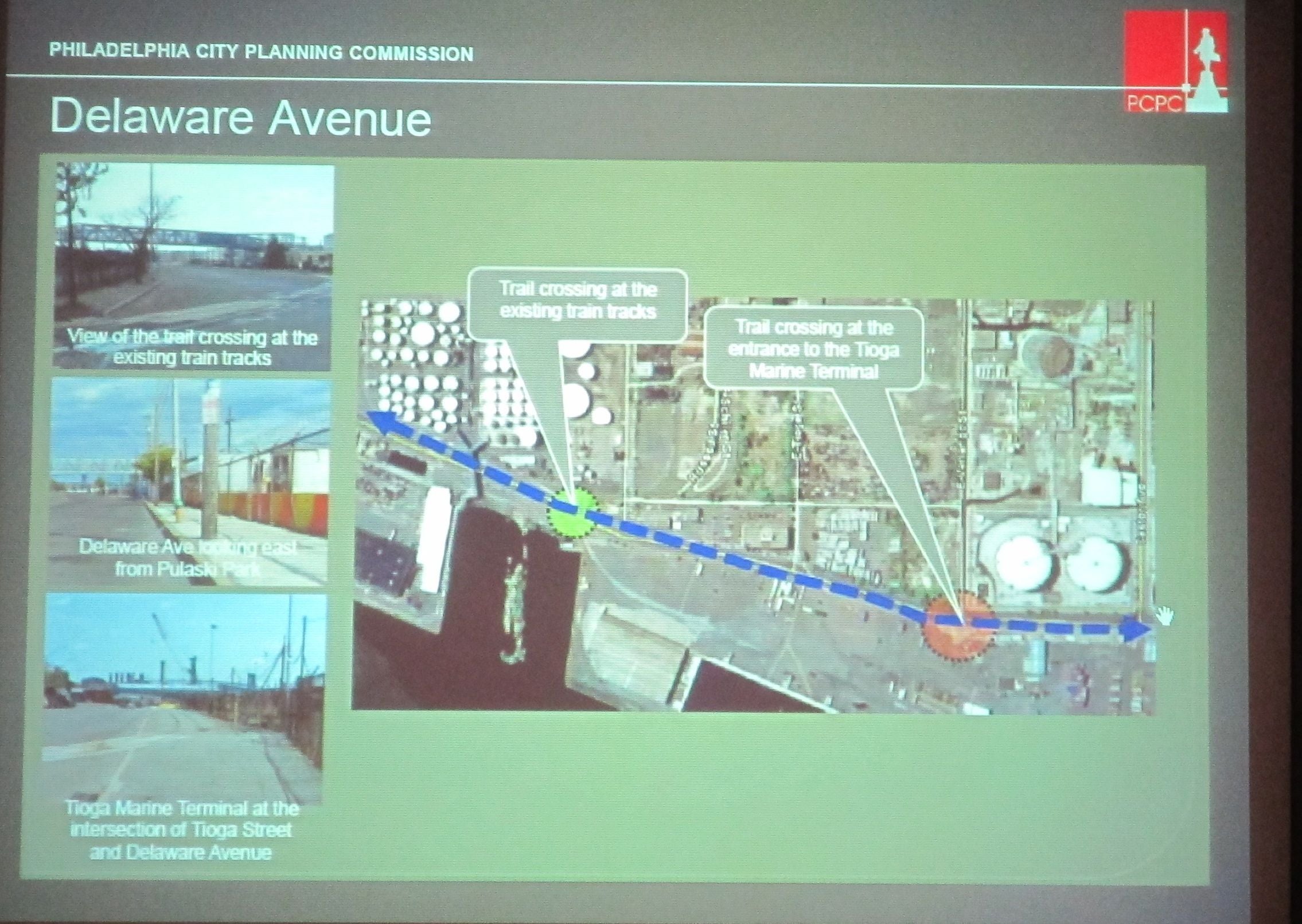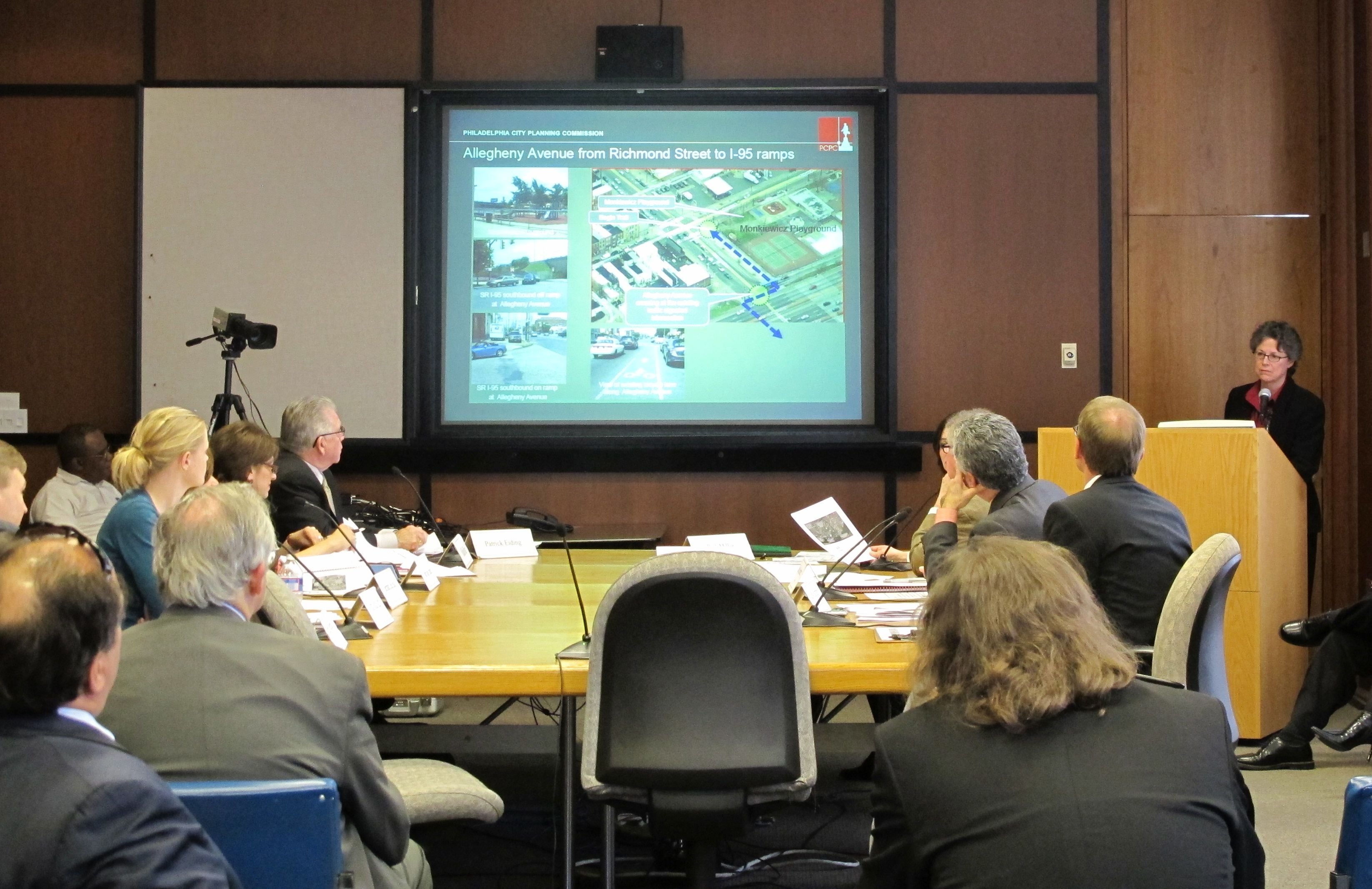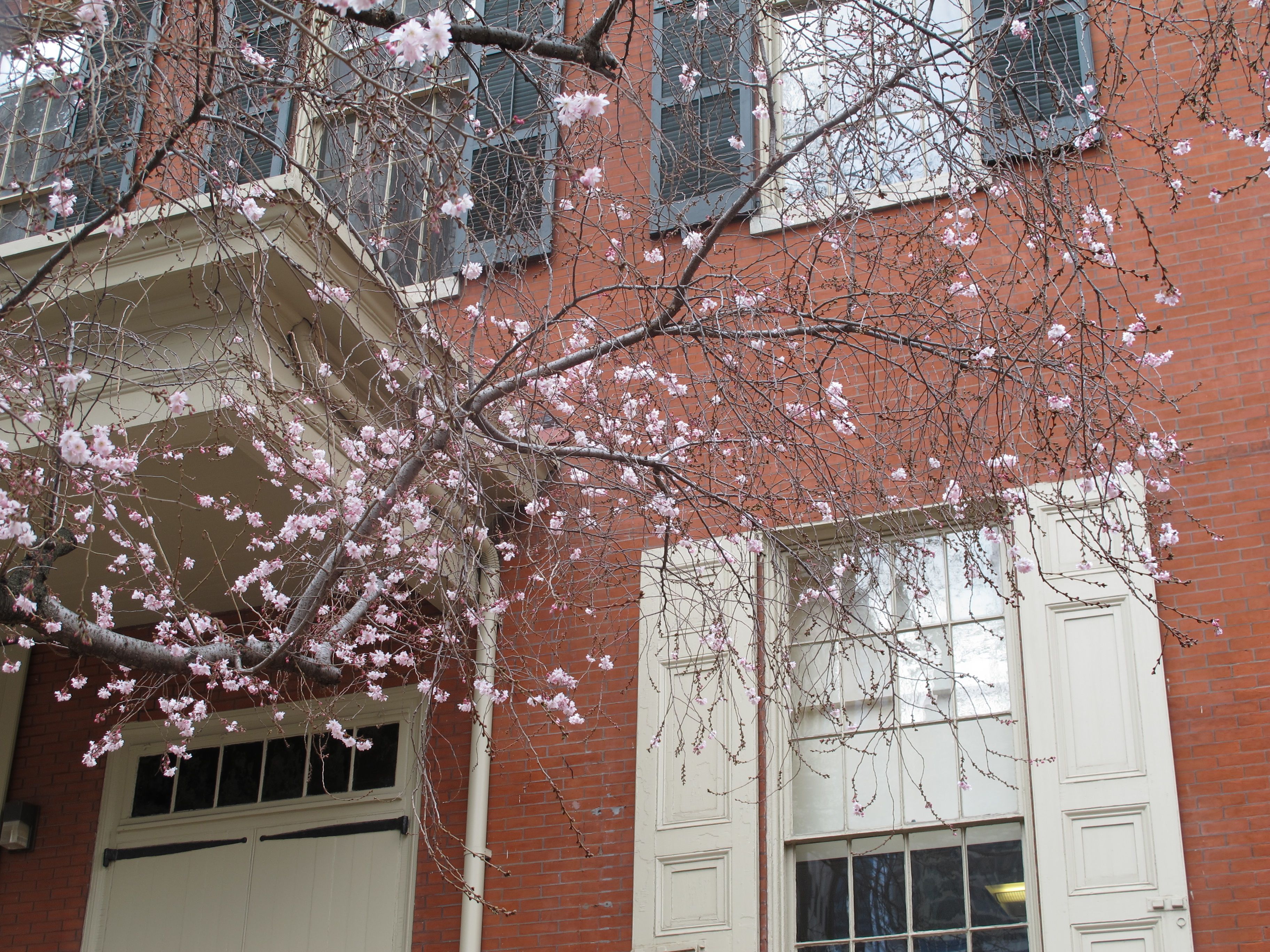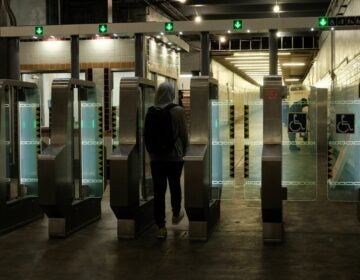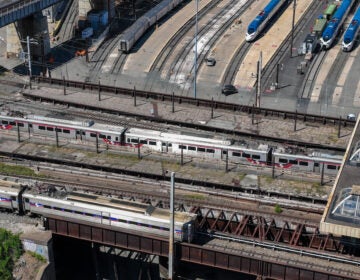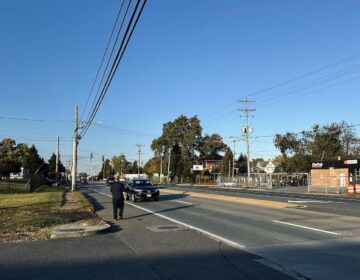PCPC: A day of comp plans, urban growth and zoning denials
The Philadelphia Planning Commission abided by staff recommendations against two new proposed Zoning Code amendments — one that would place a one-year moratorium on the construction of or addition to buildings exceeding two stories in Point Breeze, and one rezoning an industrial tract in southwest Philadelphia.
It approved the creation of new sidewalk trail along Allegheny and Delaware Avenues. And at Tuesday’s meeting, the Commission also heard a presentation on the activities of the Citizens Planning Institute (CPI), and opened up a discussion on the draft citywide comprehensive plan, Philadelphia2035.
Executive Director Gary Jastrzab first presented a staff update, with a focus on newly-released Census Bureau data that, he noted, represents our “first official population increase since the decade of the 1940s.” Since recently becoming a grandfather, he added, he could indirectly take credit for one more addition. He also reminded those in attendance that PCPC was hosting an Open House on March 23 at the Center for Architecture on the draft comp plan. And, he mentioned that the department had received an $875,000 two-year grant from the William Penn Foundation that would go toward consulting and professional fees, and continued support of the Citizens Planning Institute.
Commission Chair Alan Greenberger noted that he was “not to be outdone — my mother’s moving up here on April 1,” then introduced Donna Carney, director of CPI. She provided an overview of the Institute’s activities up to this point, and said that applications for a new crop of citizen planner trainees were now being accepted. Thirty participants — mostly from municipal and neighborhood organizations — graduated from the pilot program in December, she said.
The course is made up of three sessions: a big picture presentation of planning that involves creating a “mental map” of your neighborhood, a close look at zoning, and an examination of the development process and the place of civic organizations within that process.
Greenberger commended the program as a “terrific thing” that was not being done by any other major city, except Sacramento. Carney pointed out that the program had actually recently been cut.
Commission staff member Paula Brumbelow next presented a look a controversial zoning amendment proposed by City Councilperson Marian B. Tasco. The proposed moratorium on construction of buildings of more than two stories would impact on a neighborhood bounded by Washington Avenue and Moore Streets, and Broad and 25th Streets. Brumbelow noted that the proposal “does not seem to have broad community support” and pointed out that “most buildings between Broad and 17th streets are traditionally three-stories.”
Offering a land use map of the area that was filled with red notes denoting empty buildings and vacant lots, she declared that the moratorium would have a detrimental effect on values and hinder development, including one project of 11 affordable 3-story houses that has yet to receive its permits. Brumbelow concluded by saying that the staff felt “that the bill is not clearly written and includes internal contradictions,” and recommended disapproval of the bill.
Audience members who testified against the proposal included Claudia Sherrod, executive director of South Philadelphia Homes, a community development organization, and a representative from Point Breeze Pioneers, two groups normally at odds with each other.
Noting that the area is under a lot of development pressure and that there is a “pretty significant mixture of two- and three-story housing — a jumble of conditions,” Greenberger sought to put the area, and the issue, in perspective. “I share some of those concerns,” he continued. “That’s why at the Zoning Code Commission we’re created a pretty significant 8-foot setback that will render third stories invisible. But as for the idea of a moratorium. . . we can’t be in favor.” The Commission accepted the staff’s recommended disapproval.
Staff planner Martin Gregorski next presented on the proposed industrial tract rezoning. The property is currently used by the Philadelphia Flea Market, as parking for hospital shuttle buses, as a Ryder depot, and even includes a portion zoned LR (least restrictive) that could conceivable house oil refineries, he said.
The proposal is to take this G2 tract and change it to C3, a commercial designation that is typically used for mixed-use, TOD developments, Gregorski said. Such a move could conceivably be a tactic to secure funding, he posited, adding that “the staff doesn’t agree that rezoning is the correct way to go about getting funding.” The staff recommended disapproving this proposal.
Greenberger commented that this appeared to be “another one were we’re not quite sure where this came from, and why. It feels like a property owner asking for candy from the public candy jar to create value.” The staff’s recommendation was accepted.
The agenda’s seemingly most innocuous item, creation of a shared bike and pedestrian trail in Port Richmond, wound up generating the most discussion. Part of the larger North Delaware greensward and the East Coast greensward, the trail would run alongside Monkiewicz Recreation Center and also serve to install sidewalks in places where none currently exist. Noting tht the Port Richmond civic association supported the project, staff member Deborah Schaaf recommended approval.
After Schaff assured Greenberger that the Streets Department was in support of the project, Tom Branigan, of the Delaware River City Corp., took the mike to help clarify some points for Greenberger and Commissioner Joseph Syrnick on how the paths would dovetail and intersect and how bikers and walkers would navigate. An audience member voiced concerns about industrial uses being pushed out (but then admitted that his issue wasn’t relevant to the specific path under discussion), and a representative from Disabled in Action/Liberty Resources sought information on how wheelchair-accessible the new trail was (plenty, suggested Schaff).
Following further discussion on whether bikers and walkers might, er, cross paths, some Commission members suggested that even though the trail would be shared, signage distinguishing between the side reserved for bikes and the side reserved for pedestrians might be a good idea. After Schaaf said that was already under consideration, the trail was approved.
In presenting a discussion and public comment on the draft comp plan, the Commission saved the best for last. In a thoughtful roundtable that saw some Commission members speaking for the first time all afternoon, the draft plan garnered universal praise.
Alan Urek, the Commission’s director of Strategic Planning & Policy, first brought everyone up to speed. The Commission is, he said, currently engaged in meeting with stakeholders and gathering feedback through the rest of this month. It plans to bring a revised draft to the next PCPC meeting on April 19 and is shooting to release the document publicly in early June.
Greenberger lobbed what he termed a “softball” question about the new Census data. Urek doubted it would have impact, but Jastrzab made note that it was likely that his staff would identify poorer areas that may have been undercounted. If the numbers were adjusted upward, he said, the change might affect access to state and federal funding, though not anything to do with redistricting.
Urek then posed a philosophical question: could the Commission help him and his staff strike the right balance between realism and aspiration. Commissioner Nancy Rogo Trainer broached the subject of aspiration by mildly chastising the plan for “taking as a given” that our transportation network — and is relative lack of linkages — is fixed. Must we always assume that all roads lead to Center City, she asked, without considering how neighborhoods can better link to each other?
Greenberger picked up on the idea of hub-and-spoke systems. “Does an inter-city loop make sense?” he argued. “Certainly it’s the right idea in theory, but I’m not sure if it attracts ridership.” His thinking on this has changed over the years, he added. Rather than neighborhood to neighborhood or neighborhood to Center City or University City, we might be better off considering transit access to places where large concentrations of people work. Philadelphia is plagued, he said, “by a rather extensive network of transit that is un-integrated.”
Greenberger next opened the floor to the audience, and Sam Little, president of the Logan Square Neighbors Association, called for the plan to “be more challenging to neighborhoods to be proactive in development,” particularly when it comes to commercial and entertainment uses.
Another audience member, Brian McHale, said he had “no idea what I’m supposed to do with a comp plan,” which sparked a lively discussion among Commission members as to its purpose and goals.
“In some ways, this is the most germane question,” observed Greenberger. A plan is not dictum, he pointed out, and is subject to the vagaries of financing and personalities. “The plan is simply to get values aligned.” Trainer responded, saying, “this is what I feel has been missing for me as a Commissioner.”
When Commissioner Nilda Iris Ruiz wondered if it might make sense to check in with the plan every year to see if proposed developments and projects meshed, and Commissioner Beth Miller asked about the 18 District Plans in the works, Urek combined the questions.
“It’s not the plan, it’s the process,” he said. “This document is a piece of an integrated planning process that includes the Citizens Planning Institute, the Zoning Code Commission, and long-range planning that works toward the 18 District Plans.” As those district plans come online, he added, the comp plan would naturally come under review, if not on a yearly basis.
Craig Schelter of the Development Workshop, next made a few points on the document itself — ranging from the inclusion of more maps to its printability — and Ruiz emphasized that the city’s burgeoning Latino population be closely considered. Syrnick next asked how some of the larger projects, such as those concerning transit or waterfront development, would be prioritized. Urek said much of that would depend on upcoming meetings with the Delaware Valley Regional Planning Commission.
Greenberger offered that even putting such projects “on the table” opened them up to discussion — and the possibility of intermediate solutions that might turn into permanent ones. And with that, the meeting was adjourned.
Contact the reporter at jgreco@planphilly.com
WHYY is your source for fact-based, in-depth journalism and information. As a nonprofit organization, we rely on financial support from readers like you. Please give today.



